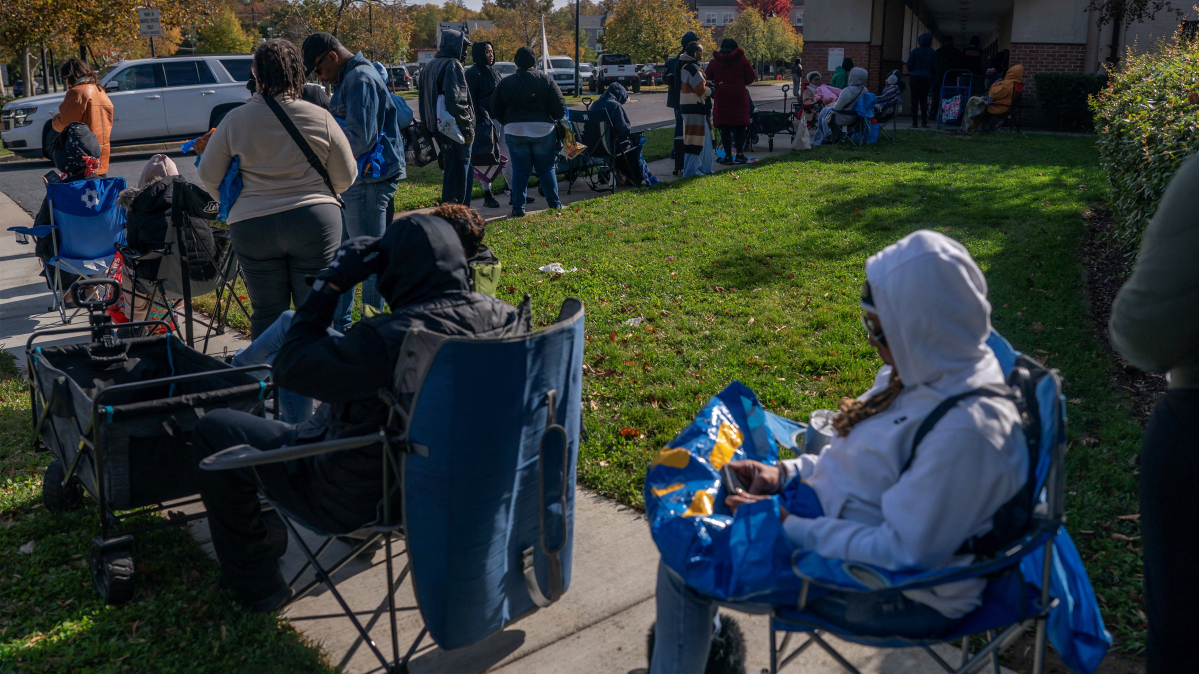Ukraine claims critical strike on Russian submarine in Novorossiysk
Ukraine’s domestic security service, the SBU, says it struck a Russian Kilo‑class submarine in the Black Sea port of Novorossiysk, causing critica...

The non-partisan Congressional Budget Office (CBO) has estimated that the ongoing U.S. federal government shutdown could reduce the economy by between $7 billion and $14 billion, shaving up to 2 percent off fourth-quarter gross domestic product, the agency said Wednesday.
The partial shutdown entered its 29th day on Wednesday, with no resolution yet in sight, as a stalemate continues between congressional Republicans and Democrats. Senate Republicans are urging Democrats to back a stop-gap funding measure to keep federal agencies operational through November 21. Meanwhile, Democrats have insisted on negotiations to extend expiring federal tax credits that help Americans purchase private insurance under the Affordable Care Act.
According to the CBO analysis, the economic damage stems from delayed federal spending on employee compensation, goods and services, and food-stamp benefits for low-income Americans. While much of the decline in real GDP is expected to be recovered once spending resumes, Director Phillip Swagel warned that a portion will be permanently lost.
“Although most of the decline in real GDP will be recovered eventually, CBO estimates that between $7 billion and $14 billion will not be,” Swagel wrote in an October 29 letter to House Budget Committee Chairman Jodey Arrington (R-Texas).
The CBO outlined scenario-based estimates for the shutdown’s duration and cost:
If the shutdown ends this week, the economy would lose roughly $7 billion.
A six-week shutdown (through November 12) would raise the loss to about $11 billion.
An eight-week shutdown (through November 26) could cost about $14 billion.
By one count, approximately 750,000 federal workers have been furloughed since funding expired on October 1, the start of the 2026 fiscal year. The Donald Trump administration has directed that U.S. troops, federal law-enforcement agents and immigration officers receive pay; other federal employees have either been furloughed or continue to work unpaid.
“The effects of the shutdown on the economy are uncertain. Those effects depend on decisions made by the administration throughout the shutdown,” Swagel added.
Analysts noted that while government spending is resumed later, the hours of lost work and delayed purchases can lower potential output permanently. The risk is higher the longer the impasse continues, given the broader ripple effects — from federal contractors missing payments, to lower consumer spending in communities dependent on federal employment and services.
With the deadline for a funding bill still under negotiation and no resolution immediately visible, the economic stakes continue to rise — and the window for minimizing permanent damage may be narrowing.
The shutdown may trim up to 2% from Q4 GDP. A portion of lost economic output is permanent, not just deferred. The standoff hinges on funding legislation, stop-gap measures and health-care tax-credit negotiations.
Extended duration means mounting economic risk beyond the immediate federal workforce.
Russia’s human rights commissioner, Tatyana Moskalkova, has said that Ukraine has not provided Moscow with a list of thousands of children it alleges were taken illegally to Russia, despite the issue being discussed during talks in Istanbul.
Iranian authorities have seized a foreign tanker carrying more than 6 million litres of smuggled fuel in the Sea of Oman, detaining all 18 crew members on board.
An explosive device found in a vehicle linked to one of the alleged attackers in Bondi shooting has been secured and removed according to Police. The incident left 12 people dead.
The latest round of clashes between Thailand and Cambodia has left 15 Thai soldiers dead and 270 others injured, Thailand’s Ministry of Defence spokesman Surasant Kongsiri said at a press conference on Saturday.
Syrian President Ahmad al-Sharaa has offered condolences to President Donald Trump following an ISIS attack near the ancient city of Palmyra that killed two U.S. soldiers and a civilian interpreter, Syrian and U.S. officials said Sunday.
Ukraine’s domestic security service, the SBU, says it struck a Russian Kilo‑class submarine in the Black Sea port of Novorossiysk, causing critical damage.
Washington’s seizure of a tanker carrying Venezuelan oil shows a shift from financial sanctions to direct maritime action, further straining relations with Caracas and increasing risks for global shipping.
Anewz brings you the best videos of the day from around the world covering everything from uplifting events to updates in conflict zones.
French senators on Monday approved a revised 2026 budget bill that the government warned could worsen the country’s fiscal deficit, setting the stage for tense negotiations between parliament’s two chambers later this week.
Flooding in Bolivia’s eastern Santa Cruz region has killed at least 20 people after an overflowing river swept through multiple communities, authorities said on Monday, with the toll expected to increase as rescue teams reach areas that were previously inaccessible.
You can download the AnewZ application from Play Store and the App Store.

What is your opinion on this topic?
Leave the first comment